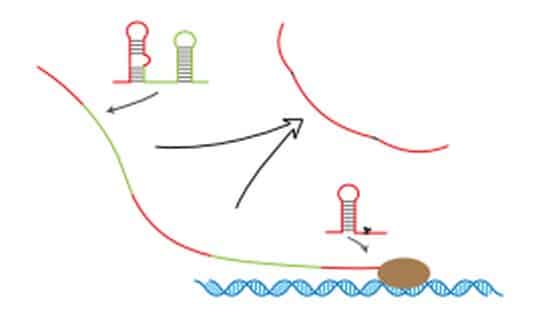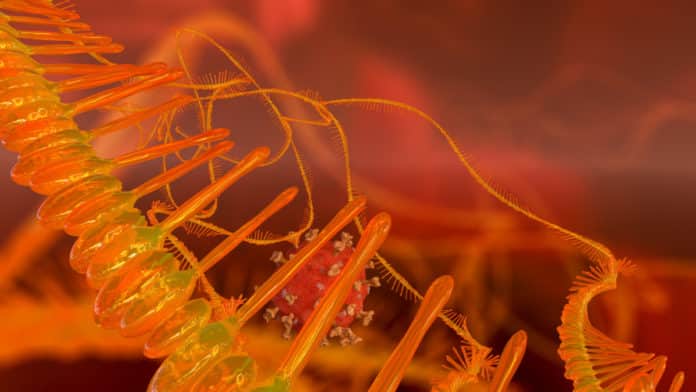Importance Of RNA Structure In mRNA Processing Discovered

An RNA molecule forms the central principle of molecular biology by acting as the vital connection between DNA and a protein. mRNAs (messenger RNAs) in eukaryotes undertake numerous processing actions consisting of splicing and polyadenylation to result in protein formation via an intermediate mature RNA. Gene expression is a phenomenon that involves a vital mRNA processing action. RNA maturation occurs as part of the processing inside the cellular nucleus, where the DNA undergoes transcription to create an mRNA.
It has constantly been a puzzling mystery about the regulation of precise identification of mRNA sites during processing. Although known to play a role in mRNA processing, the RNA structure evades from us its actual role in the mechanism of splicing and polyadenylation.
This mystery has found clues in research performed by John Innes Centre scientists who have assessed the role of RNA structure in mRNA processing. Arabidopsis thaliana was the chosen study organism for RNA structure profiling and generation of in vivo nuclear RNA structure landscape. The technique permits pre-mRNA structure and regulatory observation before processing and maturation.
In studies determining the importance of RNA structure, the in vivo pre-mRNA structure was captured across 12k genes utilizing a high accuracy and RNA resolution technique. Folding was observed to be different in cytosolic and nuclear mRNAs. Separate pre-mRNA structurally different properties were seen to be answerable to splicing and polyadenylation. Mutations further modified them, and splicing was monitored, turning these features on and off. mRNA processing is known for the first time to reveal a new mechanism for regulating RNA structure. Furthermore, the research highlighted the significance of exploring RNA populaces from various phases of the mRNA processes to examine RNA framework connection with biological features. The advancement in comprehending just how to control mRNA processing through the structure is part of an arising image from the Ding laboratory of RNA form’s relevance in molecular biology.
In the research on the importance of RNA structure, the study’s corresponding author, Dr. Yiliang Ding, said that they comprehend the in vivo RNA framework’s practical function throughout maturing RNA at a genome-wide range. Since they recognize the regulations associated with this procedure, in the future, they might have the ability to design genes from an architectural viewpoint instead of a sequence viewpoint. They intend to bring this understanding to the focus of various other scientists that can utilize it in human health and plant studies.
The team wishes to view it from a wider perspective to discover RNA framework influences on plant development and growth. Genome Biology publishes this study.
The mechanism of DNA conversion to mRNA and then to protein involves transcription and translation. This central dogma of biology describes the genetic information flow. The importance of RNA structure is seen in RNA processing, which matures the mRNA for translational processes inside the nucleus, which is a hub for transcription. Splicing is the process of removal of non-coding regions from the mRNA. A functional mature RNA is formed by polyadenylation, which involves the addition of the poly-A tail, which indicates that the RNA can migrate to the cytoplasm for translation.



